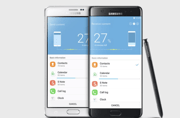Ask Joy: New Ways to Deal with Pain
- Replies 6
Note from the Editor:
This article was kindly written for the SDC by retired psychologist/ member @Joy Straw.
Pain can affect us emotionally, socially and psychologically, as well as physically.
Pain isn’t as simple as my body is sending the message to my brain that recognises it hurts. This is an outdated belief. Professor Tor Wagner suggests a more realistic way of thinking: ‘My body is under threat, so what should I be feeling?’ Pain is more a guess made by your brain in reaction to a physical stimulus.
Pain becomes more than just an ache in our joints, bones or skin. Our brain decides what these sensations mean to us by working through other factors, including memories, thoughts, feelings and whether we are having a good day or a bad day.
When we injure or twist an ankle, it is very sensitive to being placed on the ground, and we can become stressed and nervous about standing. However, after icing and strapping the ankle and resting we slowly begin to recover and are gradually able to move around without too much discomfort. Till finally we are usually able to walk normally. With chronic pain, however, these signals are amplified, and our feelings of anxiety or fear of the pain do not diminish, and we become stuck in a loop of pain, stress, fear and anxiety. This isn’t a case of ‘the pain is all in the mind’. It is about our body/brain relationship and the fact that the body and brain can’t reset back, and we remain hypersensitive to stimuli, and this, in turn, re-creates lingering pain. The longer we remain on the painkillers, the more we need to increase them as the pain effect continues, and we need increasing amounts to dull the pain.
‘If we try to ignore the chronic pain and it is left to simmer, it can develop a myriad of related issues including depression, anxiety, stress, sleep deprivation, social isolation and even financial worries.’ — Dr Abdicate (Pain Specialist).
The latest approach to pain management is working out what is contributing and causing YOUR pain and treating it according to what your needs are. The mix of these different symptoms can be difficult to work out but can be individually managed with a personally tailored Pain Management Plan (PMP).
Pain management specialists now see pain as not just pain medication but requiring a multifaceted approach including possible medical intervention such as anti-inflammatories, implant devices, nerve blocks, spinal cord stimulation, radio frequency, TENS machine and/or surgery. But that is not all, and there are several non-surgical approaches to help with managing your own pain.
Lorem ipsum dolor sit amet, consectetur adipiscing elit. Quisque in diam id erat facilisis consectetur vitae vel urna.
Ut lacus libero, suscipit auctor ipsum sit amet, viverra pretium nisl. Nullam facilisis nec odio nec dapibus. Integer maximus risus et velit porttitor ullamcorper
This article was kindly written for the SDC by retired psychologist/ member @Joy Straw.
Pain can affect us emotionally, socially and psychologically, as well as physically.
Pain isn’t as simple as my body is sending the message to my brain that recognises it hurts. This is an outdated belief. Professor Tor Wagner suggests a more realistic way of thinking: ‘My body is under threat, so what should I be feeling?’ Pain is more a guess made by your brain in reaction to a physical stimulus.
Pain becomes more than just an ache in our joints, bones or skin. Our brain decides what these sensations mean to us by working through other factors, including memories, thoughts, feelings and whether we are having a good day or a bad day.
When we injure or twist an ankle, it is very sensitive to being placed on the ground, and we can become stressed and nervous about standing. However, after icing and strapping the ankle and resting we slowly begin to recover and are gradually able to move around without too much discomfort. Till finally we are usually able to walk normally. With chronic pain, however, these signals are amplified, and our feelings of anxiety or fear of the pain do not diminish, and we become stuck in a loop of pain, stress, fear and anxiety. This isn’t a case of ‘the pain is all in the mind’. It is about our body/brain relationship and the fact that the body and brain can’t reset back, and we remain hypersensitive to stimuli, and this, in turn, re-creates lingering pain. The longer we remain on the painkillers, the more we need to increase them as the pain effect continues, and we need increasing amounts to dull the pain.
‘If we try to ignore the chronic pain and it is left to simmer, it can develop a myriad of related issues including depression, anxiety, stress, sleep deprivation, social isolation and even financial worries.’ — Dr Abdicate (Pain Specialist).
The latest approach to pain management is working out what is contributing and causing YOUR pain and treating it according to what your needs are. The mix of these different symptoms can be difficult to work out but can be individually managed with a personally tailored Pain Management Plan (PMP).
Pain management specialists now see pain as not just pain medication but requiring a multifaceted approach including possible medical intervention such as anti-inflammatories, implant devices, nerve blocks, spinal cord stimulation, radio frequency, TENS machine and/or surgery. But that is not all, and there are several non-surgical approaches to help with managing your own pain.
Lorem ipsum dolor sit amet, consectetur adipiscing elit. Quisque in diam id erat facilisis consectetur vitae vel urna.
Ut lacus libero, suscipit auctor ipsum sit amet, viverra pretium nisl. Nullam facilisis nec odio nec dapibus. Integer maximus risus et velit porttitor ullamcorper
Read more for FREE!
Become a member today and join over 200,000 Australians already taking advantage of daily news, weather, petrol costs, games, jokes, deals and more.
-
FREE 400-page Discount eBook upon joining
-
FREE Aussie-made eBook & many more
-
Multiple daily discounts for members
-
No payment required
Register Faster Using
Or Register with email
Already a member?








